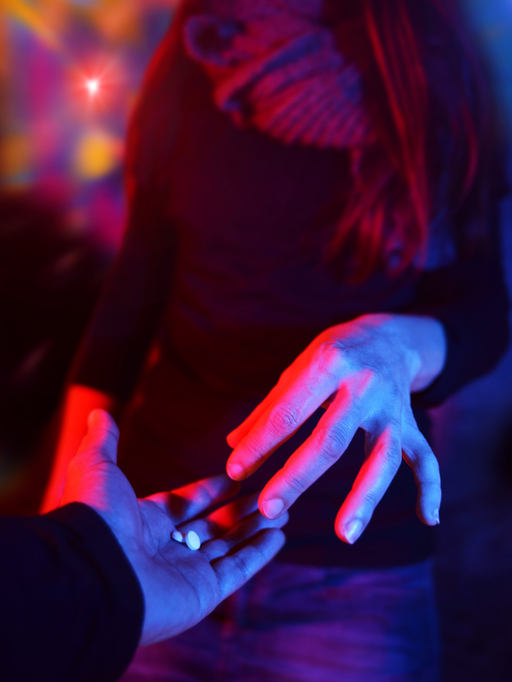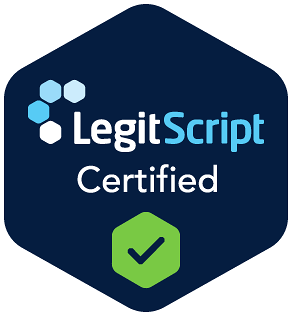Club Drug Addiction Intervention Services
Expert Intervention Services for Club Drug Addiction — speak with a certified intervention specialist today
When families witness a loved one falling into the cycle of club drug abuse, the situation can quickly feel overwhelming. Professional club drug intervention services provide structure, compassion, and the guidance necessary to break through denial and direct loved ones into treatment.
Understanding Club Drug Addiction
Unlike prescription medications or alcohol, many club drugs are used in unpredictable social settings where peer pressure, late-night parties, and high-risk environments make abuse more likely. Families are often shocked at how quickly “recreational use” spirals into dependence and dangerous behavior. Recognizing that these substances are not harmless but highly destructive is the first step toward helping a loved one get professional support.
What Are Club Drugs?
Club drugs are a category of psychoactive substances most often linked to nightlife and party environments. They are typically taken for their euphoric, stimulating, or hallucinogenic effects. However, their unpredictable composition, especially when sold as powders, pills, or liquids, makes them highly dangerous.
Common club drugs include:
- MDMA (Ecstasy, Molly): Produces feelings of empathy, energy, and euphoria, but can cause severe dehydration, anxiety, and long-term brain damage.
- Ketamine: A dissociative drug that creates hallucinations and memory loss; prolonged use can damage the bladder and kidneys.
- GHB: Known as the “date rape drug,” it can cause unconsciousness, seizures, and is highly addictive with severe withdrawal symptoms.
- Rohypnol: A benzodiazepine sometimes used recreationally; it creates sedation, amnesia, and high risk when combined with alcohol.
- LSD (Acid): A hallucinogen that alters perception; while not typically physically addictive, it can lead to dangerous behaviors and psychological dependence.
- Methamphetamine: A powerful stimulant that is often found in nightlife circles; it is highly addictive and destructive to both mind and body.
Dangers of Club Drug Addiction
The risks of club drug use go far beyond a single night of partying. Many families only realize the severity once their loved one begins experiencing health problems, personality changes, or financial and legal troubles.
Some dangers include:
- Memory loss and cognitive decline
- Heart and liver damage
- Seizures and stroke
- Aggression, paranoia, and psychosis
- Sexual assault risks (especially with GHB and Rohypnol)
- Risk of overdose or death, especially when combined with alcohol or opioids
Because pills and powders are often cut with unknown substances, users never truly know what they are ingesting. This unpredictability makes every dose potentially life-threatening.
Why a Professional Club Drug Intervention Is Important
Families often hear their loved one dismiss concerns by saying, “It’s just recreational.” Denial is extremely common with club drug addiction, which makes outside help critical.
A certified interventionist ensures the process is:
- Structured: Every step is planned, from family preparation to treatment entry.
- Compassionate: The focus is on love, support, and accountability—not shame.
- Effective: Professional guidance increases the chances your loved one accepts treatment.
Waiting too long allows the addiction to deepen, making recovery more difficult. Early intervention is the best path toward preventing permanent damage.
Signs and Symptoms of Club Drug Addiction
Families should watch for these warning signs:
- Sudden changes in sleep and appetite
- Extreme mood swings, anxiety, or paranoia
- Missing money or unexplained spending
- Unusual sleep patterns after nights out
- Isolation from family in favor of party friends
- Memory lapses or blackouts
Recognizing these symptoms early can give families a crucial head start in addressing the problem.
The Role of Families in a Club Drug Intervention
Intervention is most effective when the family is actively involved. With guidance, families learn how to:
- Stop enabling behaviors
- Set healthy boundaries
- Provide loving but firm accountability
- Support recovery after treatment
Healing is not only for the individual — it’s for the entire family system.
Sober Coaching After Club Drug Treatment
Recovery is an ongoing process. Sober coaching helps individuals maintain focus and accountability after treatment by:
- Offering one-on-one mentorship
- Helping manage daily challenges and triggers
- Building new routines that support sobriety
- Reducing relapse risk through consistent support
For many, sober coaching becomes the bridge between inpatient treatment and long-term independence.
Click to view answers
What are considered Club Drugs?
Club drugs include MDMA (Ecstasy, Molly), ketamine, GHB, Rohypnol, LSD, and methamphetamine—substances often taken in nightlife or party settings.
Are Club Drugs Addictive?
Yes. Some, like methamphetamine, ketamine, and GHB, are highly addictive. Even those considered “less addictive” can lead to psychological dependence and harmful use patterns.
What are drug and alcohol interventions?
A drug and alcohol intervention is a structured and intentional process led by a professional interventionist to help a substance user recognize the impact of their addiction and agree to seek treatment. It involves a collaborative team of family members, friends, and a professional to guide the discussion and encourage the substance user to accept help.
What costs are associated with hiring a professional interventionist?
The costs of hiring a professional interventionist can vary based on the complexity of the case, travel requirements, and the duration of care. Health insurance may cover some intervention services. It’s important to consider that the financial and emotional costs of not addressing a loved one’s addiction can be far greater in the long run.
What happens during a club drug intervention?
Our professional interventionist guides the family through a structured meeting where concerns are voiced, boundaries set, and treatment is presented as the clear solution.
Why is a professional interventionist important for club drug addiction?
Attempting an intervention without guidance often leads to conflict or denial. A professional interventionist brings structure, neutrality, and expertise to the process. They understand the unique risks of club drugs — including the high potential for overdose, memory loss, and polydrug use — and know how to break through resistance in a compassionate but firm way. Professional support dramatically increases the likelihood that the loved one will accept treatment.
When should a family consider a club drug intervention?
Families should not wait until the addiction becomes life-threatening. Warning signs such as blackouts, mood swings, missing money, risky behavior, or combining drugs with alcohol are strong indicators that an intervention is needed. Club drug use can quickly escalate because these substances are often unpredictable and mixed with other chemicals. Early intervention is always best practice, giving your loved one the greatest chance of recovery.
What treatment options follow a club drug intervention?
After a successful intervention, treatment may include medical detox, inpatient rehabilitation, or outpatient programs depending on the severity of the addiction. For substances like GHB, ketamine, or methamphetamine, detox under medical supervision is strongly recommended due to the risks of withdrawal. Long-term therapy, relapse prevention planning, and sober coaching provide the structure needed for sustainable recovery after initial treatment.
What role do families play during and after treatment?
Families play a critical role in long-term recovery. By setting healthy boundaries, offering encouragement, and participating in aftercare planning, families help their loved one stay engaged in treatment and avoid relapse after leaving rehab.
Saving a Life Starts Here
Learn more about our method for successful intervention. Contact us today for a free, confidential consultation with an Intervention Counselor.
Please fill out the form and download your copy of the 25 tips for Successful Intervention





